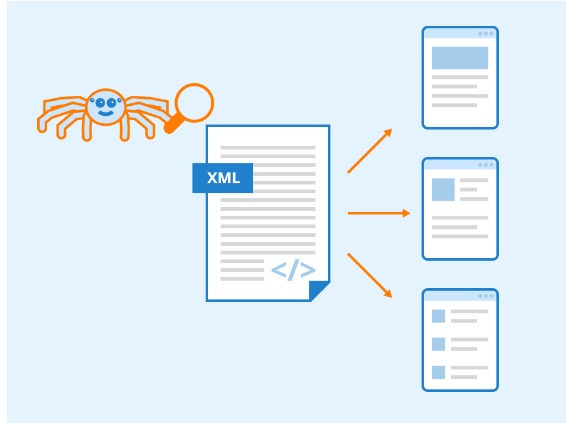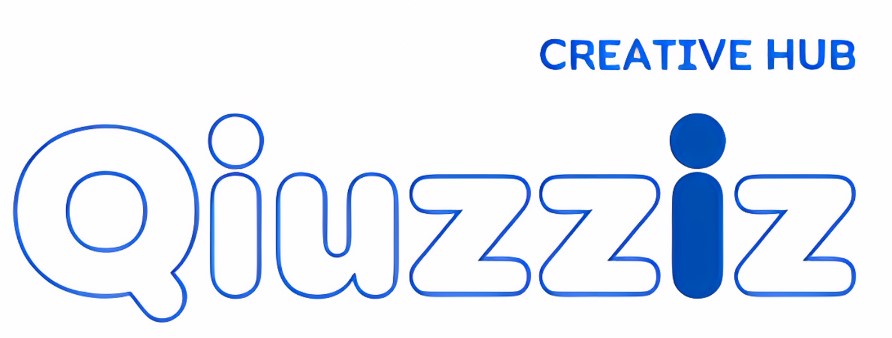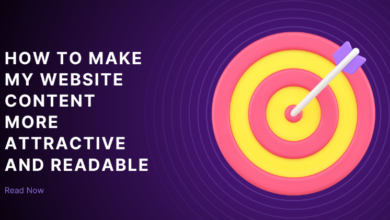A Full Guide to Creating the Best Structured Website

Creating a well-structured website is important for making sure that both optimal user experience and search engine optimization (SEO). This guide will walk you through designing a website that is visually appealing but also functional, and efficient in terms of SEO. The structure of your website impacts how users navigate it, how search engines crawl it, and ultimately, how successful it will be in driving traffic and conversions.
1. Website Structure
A well-structured website is the foundation of a positive user experience and effective SEO. It ensures that users can easily find the information they need and that search engines can efficiently crawl and index your site. Good website structure improves navigation, reduces bounce rates, and increases the likelihood of conversions.
Types of Website Structures
- Hierarchical Structure: This is the most common website structure, organized like a tree with a homepage at the top, followed by categories and subcategories.
- Sequential Structure: This is often used for tutorial or instructional websites, guiding users through a series of steps in a specific order.
- Matrix Structure: This allows users to choose their path through the content, often used in more complex sites like e-commerce platforms.
- Database-Driven Structure: This is used for large websites that store a significant amount of data, allowing for dynamic content generation based on user queries.
Benefits of a Good Website Structure
- Enhanced User Experience: Users can navigate your site easily, find information quickly, and enjoy a seamless journey.
- Better SEO Performance: Search engines can crawl and index your site more efficiently, improving your rankings.
- Increased Conversion Rates: A clear and logical structure helps guide users towards desired actions, such as making a purchase or signing up for a newsletter.
2. Planning Your Website Layout
Conducting Audience Research
Understanding your target audience is crucial in planning your website layout. Conduct surveys, analyze user behavior, and create buyer personas to identify their needs and preferences.
Defining Your Website Goals
Determine the primary objectives of your website. Whether it’s to sell products, generate leads, or provide information, your goals will guide the overall design and structure.
Creating a Sitemap
A sitemap is a visual representation of your website’s structure. It helps you plan the layout and organization of your pages. Tools like XML-sitemaps.com can help you generate a sitemap easily.
Wireframing and Prototyping
Wireframes are basic blueprints of your web pages, outlining the structure and layout without design elements. Prototypes are more detailed versions that include design aspects and interactive elements. Tools like Sketch, Figma, or Adobe XD can assist in creating wireframes and prototypes.
3. Designing a User-Friendly Navigation
Importance of Navigation
Navigation is a critical component of website structure, influencing how users move through your site and find information. Poor navigation can frustrate users and lead to high bounce rates.
Types of Navigation Menus
- Horizontal Navigation Bar: Commonly found at the top of the page, it includes links to the main sections of the website.
- Vertical Sidebar Navigation: Often used for blogs and e-commerce sites, it provides easy access to various categories and subcategories.
- Dropdown Menus: Useful for sites with a lot of content, allowing users to access subcategories from the main navigation bar.
- Footer Navigation: Provides additional links to important pages like the privacy policy, terms of service, and contact information.
Best Practices for Navigation Design
- Keep it Simple: Avoid cluttering your navigation bar with too many links. Stick to the main categories.
- Use Descriptive Labels: Ensure that navigation labels are clear and descriptive, helping users understand where each link will take them.
- Ensure Consistency: Maintain consistent navigation across all pages to avoid confusing users.
- Include a Search Bar: A search bar helps users find specific information quickly, improving overall user experience.
4. Optimizing Your Homepage
Role of the Homepage
The homepage is often the first impression visitors have of your website. It should clearly convey your brand message, showcase your main offerings, and guide users to other sections of the site.
Elements of an Effective Homepage
- Clear Value Proposition: Communicate what your website is about and what value it provides to users.
- Engaging Visuals: Use high-quality images and videos to capture users’ attention.
- Prominent Call-to-Actions (CTAs): Guide users towards desired actions with clear and compelling CTAs.
- User-Friendly Layout: Organize content logically and use whitespace effectively to avoid a cluttered look.
- Testimonials and Social Proof: Include reviews, testimonials, and logos of trusted partners to build credibility.
SEO Considerations for the Homepage
- Title Tag and Meta Description: Include your main keyword in the title tag and meta description to improve search engine rankings.
- Header Tags: Use H1 tags for the main heading and H2/H3 tags for subheadings to structure your content.
- Alt Text for Images: Optimize images with descriptive alt text to improve accessibility and SEO.
- Internal Linking: Link to important pages within your site to help search engines crawl and index your content.
5. Creating Effective Internal Linking
Importance of Internal Linking
Internal linking connects various pages within your website, helping users navigate and search engines understand the structure and hierarchy of your content.
Types of Internal Links
- Contextual Links: These are links within the body of your content, directing users to related articles or relevant pages.
- Navigational Links: Found in the navigation bar, sidebar, or footer, these links guide users to main sections of your site.
- Footer Links: Often used for legal and informational pages, such as privacy policies and terms of service.
Best Practices for Internal Linking
- Use Descriptive Anchor Text: Anchor text should be relevant and descriptive, giving users and search engines an idea of what to expect on the linked page.
- Link to Relevant Content: Ensure that internal links are contextually relevant to the content they are placed within.
- Avoid Overlinking: Too many links can be overwhelming and may dilute the effectiveness of your internal linking strategy.
- Regularly Update Links: Ensure that your internal links are up-to-date and not leading to broken or outdated pages.
6. Developing High-Quality Content
Understanding Your Audience
Create content that addresses the needs, questions, and interests of your target audience. Use tools like Google Analytics and social media insights to understand what your audience is looking for.
Creating Engaging Content
- Use a Conversational Tone: Write in a way that is easy to read and understand, avoiding jargon and complex language.
- Incorporate Visuals: Use images, infographics, and videos to make your content more engaging and easier to digest.
- Provide Value: Offer actionable insights, tips, and solutions to your audience’s problems.
- Update Regularly: Keep your content fresh and up-to-date to maintain relevance and authority.
SEO Best Practices for Content
- Keyword Research: Identify relevant keywords and incorporate them naturally into your content.
- Use Header Tags: Structure your content with H1, H2, and H3 tags to improve readability and SEO.
- Optimize Meta Tags: Write compelling meta titles and descriptions that include your target keywords.
- Internal and External Links: Link to other relevant content on your site and authoritative external sources to provide additional value and context.
7. Utilizing Multimedia Elements
Benefits of Multimedia
Multimedia elements such as images, videos, and infographics can enhance user engagement, improve comprehension, and make your content more appealing.
Best Practices for Using Images
- Use High-Quality Images: Ensure that images are high-resolution and relevant to the content.
- Optimize Image Size: Compress images to reduce load times without compromising quality.
- Include Alt Text: Write descriptive alt text for each image to improve accessibility and SEO.
- Use Captions: Captions can provide additional context and make images more informative.
Best Practices for Using Videos
- Host Videos on Reliable Platforms: Use platforms like YouTube or Vimeo to host your videos and embed them on your site.
- Optimize Video Load Time: Ensure videos are optimized for fast loading to avoid slowing down your site.
- Include Transcripts: Provide transcripts for videos to improve accessibility and SEO.
- Use Thumbnails: Create engaging thumbnails to encourage users to watch your videos.
Best Practices for Using Infographics
- Simplify Information: Infographics should present complex information in a simple and visually appealing way.
- Use Clear Visuals: Ensure that graphics are clear, well-designed, and easy to understand.
- Optimize for SEO: Include descriptive file names and alt text for infographics.
- Promote Sharing: Make it easy for users to share your infographics on social media and other platforms.
8. Enhancing Mobile Responsiveness
Importance of Mobile-Friendly Design
With the increasing use of mobile devices, having a mobile-friendly website is essential. A responsive design ensures that your site provides a seamless experience across all devices.
Best Practices for Mobile Optimization
- Use Responsive Design: Implement a responsive design that automatically adjusts to different screen sizes.
- Simplify Navigation: Ensure that navigation menus are easy to use on mobile devices.
- Optimize Touch Elements: Make buttons and links large enough to be easily tapped on touchscreens.
- Reduce Load Times: Optimize images and use efficient coding practices to improve load times on mobile devices.
- Test Across Devices: Regularly test your site on various mobile devices and browsers to ensure compatibility.
9. Improving Page Load Speed
Importance of Fast Load Times
Page load speed is a critical factor for both the user experience and SEO. Slow-loading pages can lead to high bounce rates and lower search engine rankings.
Techniques to Improve Load Speed
- Optimize Images: Compress images and use appropriate formats (e.g., JPEG for photos, PNG for graphics with transparency).
- Minimize HTTP Requests: Reduce the number of elements on your page to minimize HTTP requests.
- Enable Browser Caching: Use browser caching to store static files locally, reducing load times for returning visitors.
- Use a Content Delivery Network (CDN): A CDN can distribute your content across multiple servers, improving load times for users in different geographical locations.
- Minify CSS, JavaScript, and HTML: Remove unnecessary characters and whitespace from your code to reduce file sizes.
10. Ensuring Accessibility Compliance
Importance of Accessibility
An accessible website ensures that all users, including those with disabilities, can access and interact with your content. Accessibility is also a ranking factor for search engines.
Best Practices for Accessibility
- Use Semantic HTML: Use proper HTML tags to structure your content and make it understandable for assistive technologies.
- Provide Text Alternatives: Include alt text for images, captions for videos, and transcripts for audio content.
- Ensure Keyboard Accessibility: Make sure that all interactive elements can be accessed and operated using a keyboard.
- Use ARIA Roles: Implement Accessible Rich Internet Applications (ARIA) roles to enhance the accessibility of dynamic content.
- Test for Accessibility: Use tools like WAVE or Lighthouse to test and improve the accessibility of your website.
11. Implementing SEO Best Practices
On-Page SEO
- Title Tags: Craft unique and compelling title tags for each page, including your target keywords.
- Meta Descriptions: Write informative and engaging meta descriptions that summarize the content and include keywords.
- Header Tags: Use H1 tags for main headings and H2/H3 tags for subheadings to structure your content.
- Alt Text: Optimize images with descriptive alt text that includes relevant keywords.
- Internal Linking: Link to other relevant pages on your site to improve navigation and SEO.
Off-Page SEO
- Backlinks: Acquire high-quality backlinks from reputable sites to improve your site’s authority and rankings.
- Social Media Engagement: Promote your content on social media to drive traffic and increase visibility.
- Guest Blogging: Write guest posts for authoritative sites in your industry to build backlinks and reach a wider audience.
Technical SEO
- XML Sitemap: Create and submit an XML sitemap to search engines to help them crawl and index your site.
- Robots.txt: Use the robots.txt file to control which pages search engines can crawl.
- Canonical Tags: Implement canonical tags to prevent duplicate content issues.
- Structured Data: Use schema markup to provide search engines with additional information about your content.
12. Monitoring and Updating Your Website
Importance of Regular Monitoring
Regular monitoring helps you identify and fix issues, keep your content up-to-date, and ensure that your website continues to perform well.
Tools for Monitoring
- Google Analytics: Track user behavior, traffic sources, and other key metrics.
- Google Search Console: Monitor your site’s search results performance and identify any issues.
- SEO Tools: Use tools like SEMrush, Ahrefs, or Moz to track your site’s SEO performance and identify opportunities for improvement.









